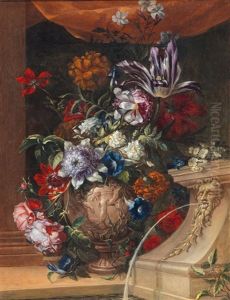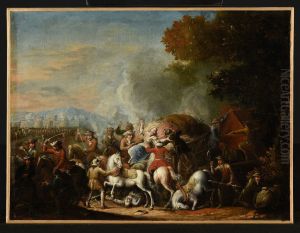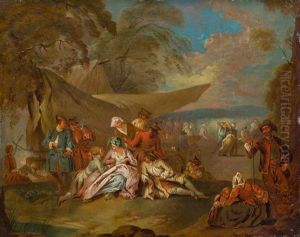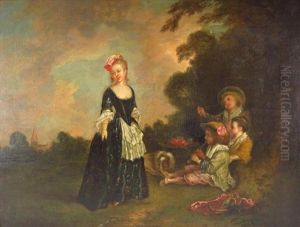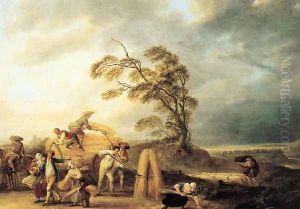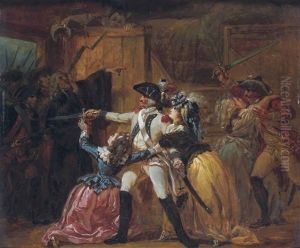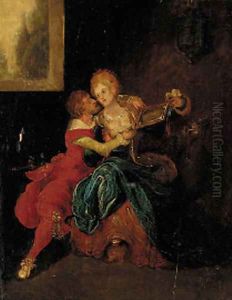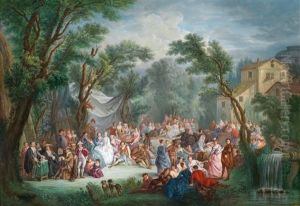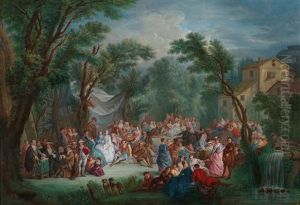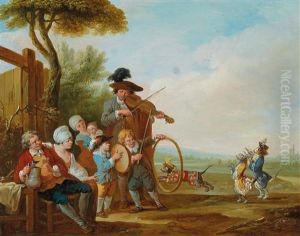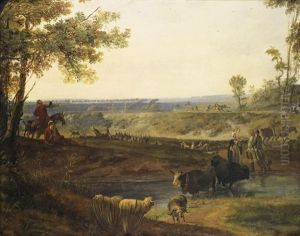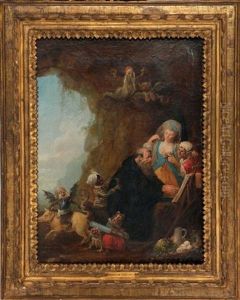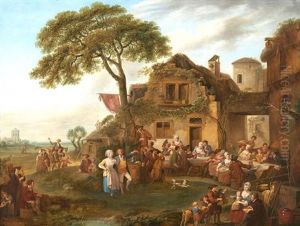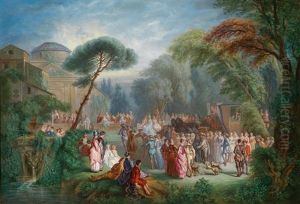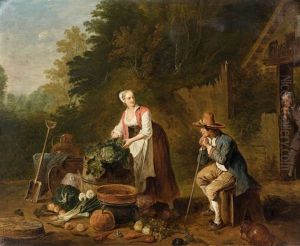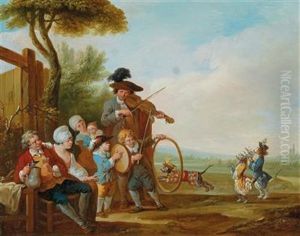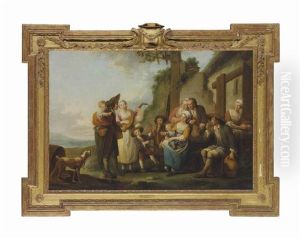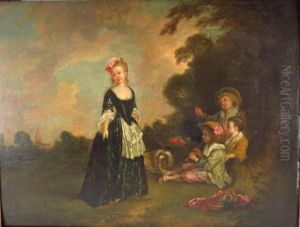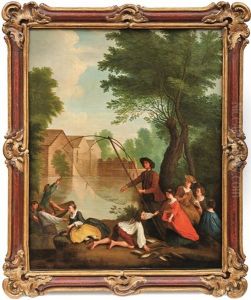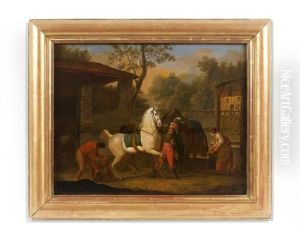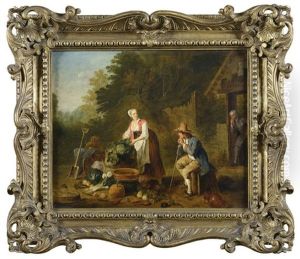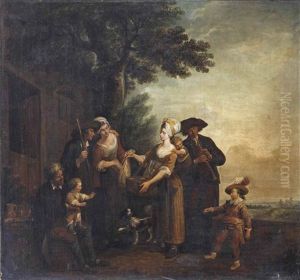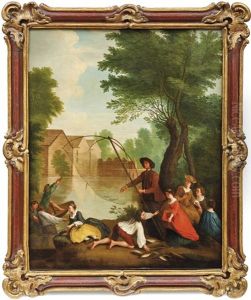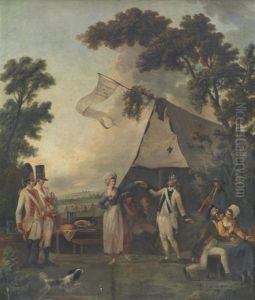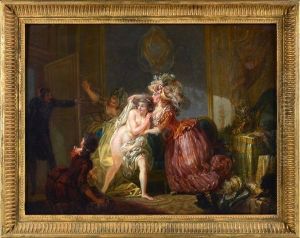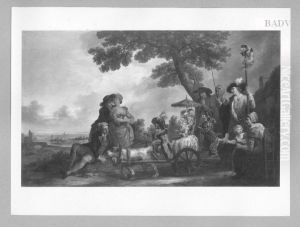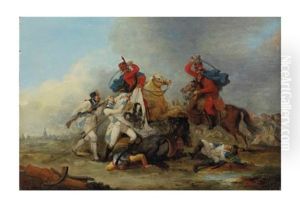Louis-Joseph Watteau Paintings
Louis-Joseph Watteau, often referred to as Watteau of Lille, was a French painter, born on April 10, 1731, in Valenciennes, a town which was then in the county of Hainaut and part of the Austrian Netherlands. He was the nephew of the famous Rococo painter Antoine Watteau, known for his fêtes galantes and idyllic scenes. Louis-Joseph, however, should not be confused with his more famous uncle, as their styles and subject matters were quite distinct from one another.
Louis-Joseph Watteau is particularly recognized for his military scenes and for being a part of the movement towards more realistic depictions of daily life. He was influenced by the Dutch tradition of genre painting and by the works of Flemish Baroque painters. Watteau moved to Lille in 1758 and became a municipal painter there. His works include detailed representations of military campaigns, barracks life, and depictions of soldiers. These pieces were significant in that they provided a glimpse into the everyday life of the military during the 18th century.
Watteau's skill in capturing the ambiance of military encampments and the various facets of military life was not his only forte. He also painted landscapes, portraits, and religious scenes, showcasing his versatility as an artist. Despite the shadow cast by his uncle's grandeur, Louis-Joseph Watteau managed to gain recognition in his own right and became an important figure in the artistic landscape of Northern France.
He lived through a turbulent period in French history that saw the end of the Ancien Régime, the French Revolution, and the beginning of the Napoleonic era. His art provides a window into the society and culture of his time. Watteau's works are preserved in various museums and collections, including the Palais des Beaux-Arts de Lille.
Louis-Joseph Watteau passed away on August 12, 1798, in Lille. His legacy, much like that of his uncle, contributes to our understanding of French art history, though his oeuvre is appreciated for its unique qualities and historical value.

